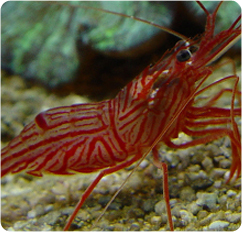

Ten or more should work well for larger setups. A group of five or so should be enough to keep algae under control in tanks smaller than 20 gallons. It's extremely popular due to being the go-to algae exterminator throughout the aquarium and aquascape hobbies.Īmano shrimp aren't picky when it comes to algae and will eat almost any type, with black beard algae and cyanobacteria being the only common exceptions. The Amano shrimp is such an effective algae eater that one of its common names is actually "algae eating shrimp"! With its transparent body, this species is not the most exciting to look at. Once those factors are all under control, your shrimp can help by picking off any algae that do pop up, which they do quite effectively. Take a good look at your lighting schedule (are the lights on for too long?), plants (fast-growing plants can outcompete algae for nutrients) and water values (excess nitrate and phosphate can cause an algae explosion). This means they won't disappear entirely unless you figure out what exactly is going on and fix it. Algae are a structural problem caused by a nutrient imbalance. Some shrimp, like the popular ghost shrimp, are more avid scavengers while others specialize in algae and biofilm.Īs mentioned earlier, even with a shrimp cleaning crew you still can't always expect to skip the scrubbing altogether.

Their natural diet usually consists of biofilm that grows on rocks and plants, (decaying) plant matter, dead fish and other meaty foods and, of course, many types of algae. This is a type of omnivore that will eat anything it can find. Cherry shrimp/Sakura shrimp (Neocaridina davidi)Īlmost all freshwater aquarium shrimp are naturally detrivores.


 0 kommentar(er)
0 kommentar(er)
